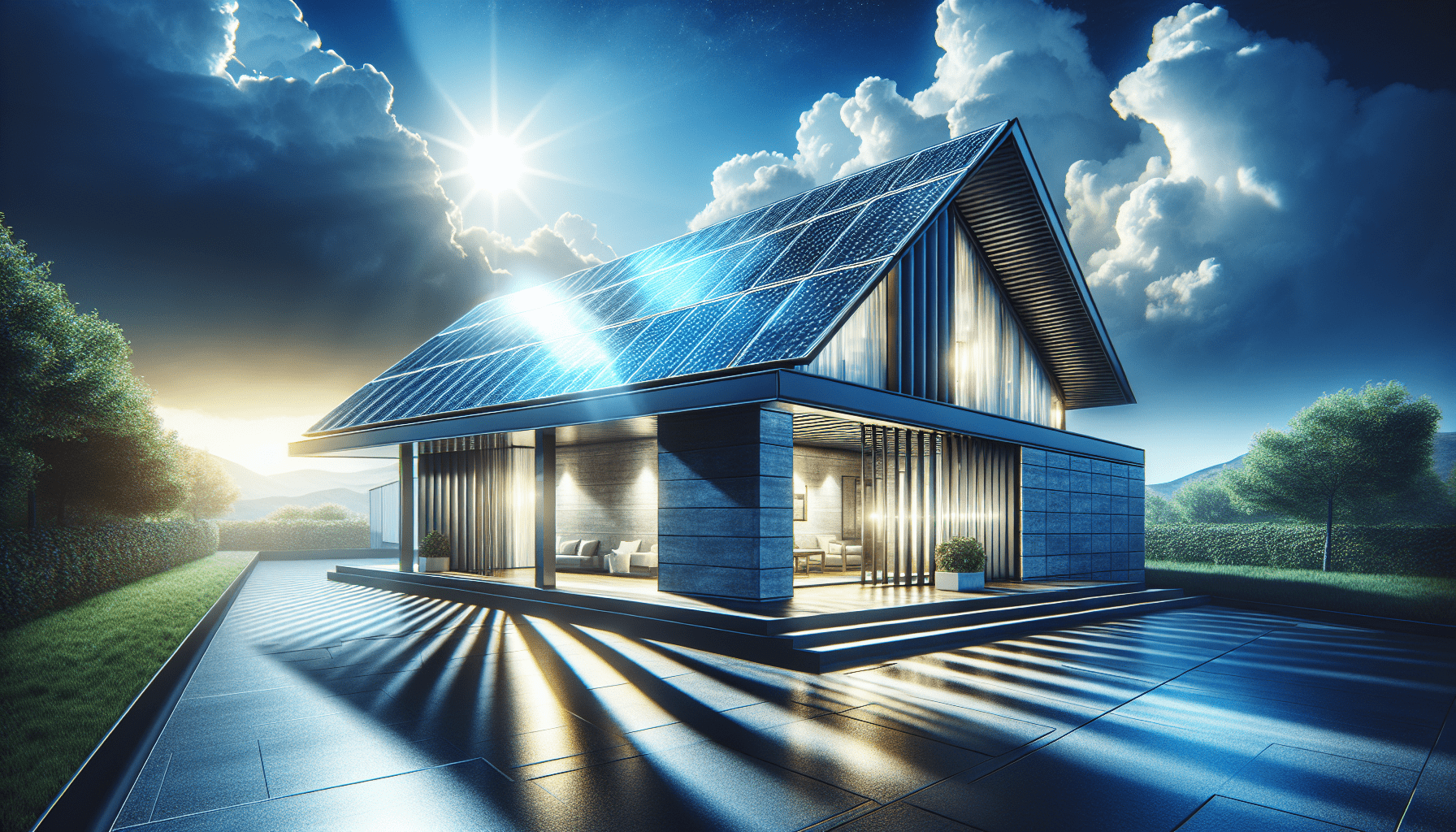Harnessing Solar Power: The Future of House Power Banks
As an Amazon Associate, I earn from qualifying purchases, at no additional cost to you. Disclaimer
Have you ever considered how much potential lies in harnessing the power of the sun? As energy needs continue to grow and environmental concerns become more pressing, solar energy is emerging as a viable and sustainable solution for homes around the world. One of the groundbreaking innovations in this field is the development of solar power banks for houses. This technology promises to revolutionize the way you power your home while also helping you to reduce your carbon footprint.
Click Here to Tap Into Unlimited Solar Power
Understanding Solar Power for Your Home
Solar energy has been around for quite some time, but it seems as though we’re only just beginning to tap into its true potential for personal and residential use. By converting sunlight into electricity, solar panels can provide a clean and renewable source of power. As the technology becomes more efficient and less expensive, it’s becoming an increasingly practical solution for homeowners.
How Solar Panels Work
Solar panels, also known as photovoltaic (PV) panels, work by using cells made of semiconductor materials like silicon to absorb sunlight. When light particles (photons) hit a solar cell, they knock electrons loose from their atoms. This reaction generates a flow of electricity that can be harnessed for use in your home.
Benefits of Solar Power
Why should you consider investing in solar power for your home? The advantages are numerous. Solar energy is renewable and sustainable, meaning it’s not going to run out anytime soon. Installing solar panels can also reduce your electricity bills significantly over time, and possibly even eliminate them altogether if your system is efficient enough. Additionally, solar energy systems produce no harmful emissions, which can greatly reduce your overall environmental impact.
What is a Solar Power Bank for Your Home?
Solar power banks for homes are an innovative solution designed to store excess energy generated by solar panels. Traditionally, homes with solar panels relied on a connection to the electrical grid to sell surplus energy or draw power when the sun wasn’t shining. However, solar power banks provide an alternative by storing excess energy for future use.
Components of a Solar Power Bank System
A typical home solar power bank system includes solar panels, an inverter, a charge controller, and a battery storage unit. Each component plays a vital role in ensuring your system works efficiently and effectively.
- Solar Panels: Capture sunlight and convert it to electricity.
- Inverter: Converts the DC electricity produced by solar panels into AC electricity, which can be used by your home appliances.
- Charge Controller: Regulates the voltage and current coming from the solar panels to prevent overcharging of the batteries.
- Battery Storage: Stores excess power for use when demand is high or when solar panels aren’t able to generate electricity, like during nighttime or cloudy days.
Advantages of Home Power Banks
Home power banks enhance your solar system’s reliability and efficiency. With a power bank, you can use the stored energy during outages, peak demand times, or cloudy days. This means greater energy independence and potentially lower electricity costs. Moreover, storing energy at home reduces reliance on a sometimes unstable electrical grid and peak time energy rates.

Click Here to Maximize Your Energy Savings
Steps to Transition to a Solar Power Bank System
Thinking about transitioning to solar power and incorporating a power bank system in your home? Here are some important steps to follow:
Evaluate Your Home’s Energy Needs
First, you’ll need to assess your current energy consumption. This can help you determine how many solar panels you need and the size of the power bank storage. Consult with a professional to perform an energy audit that reviews your past energy usage, seasonal fluctuations, and future expectations.
Consider Solar Panel Installation
The positioning and type of solar panels are paramount to maximizing energy collection. Most often, panels are installed on your roof, facing a direction that captures the most sunlight throughout the day. The angle and tilt of the panels should also be considered and are often best handled by professionals.
Choose the Right Solar Power Bank
Power banks vary in capacity, efficiency, and technology. Lithium-ion batteries are most common due to their reliability and extended lifespan. It’s essential to select a system that suits your budget but also aligns with your energy consumption requirements.
Installation and Maintenance
Hiring experienced installers ensures not only that your equipment is properly set up but also that you’re getting the most efficient use out of your system. Regular maintenance is also crucial to maintaining your system’s performance. Keeping panels free of debris and ensuring all electrical components are functioning will help you make the most of your solar investment.
Financial Considerations
Transitioning to solar power with a home power bank involves certain upfront costs that can be daunting. However, the long-term savings and financial incentives can offset these initial expenses.
Upfront Costs and ROI
Installation of solar panels and a power bank can be costly. However, it’s important to consider these costs as an investment. Over time, the savings on your energy bills can make a significant return on investment (ROI), potentially breaking even in as little as five to ten years depending on your usage and local energy rates.
Government Incentives and Rebates
Many governments offer tax credits, rebates, or incentives to encourage solar power adoption. These can significantly reduce the cost of installation. It’s worth consulting with a local solar provider or government office to find out what programs are available in your area.
Long-term Savings
By reducing or even eliminating your monthly electricity bill, a solar power system can lead to substantial savings over the years. Further, as the cost of traditional electricity sources continues to rise, the relative savings of producing your own solar power becomes even greater.

Click Here to Discover Solar Solutions
Environmental Impact
Switching to solar power doesn’t just benefit your pocketbook; it contributes positively to the environment too.
Reducing Carbon Footprint
Traditional energy sources like coal and natural gas release significant amounts of carbon dioxide and other pollutants into the atmosphere. Solar power, on the other hand, is clean and produces no emissions during operation. By switching to solar, you can significantly reduce your household’s carbon footprint.
Promoting Sustainable Living
Using solar power promotes a more sustainable and eco-friendly lifestyle. It’s a positive choice for the environment that supports future generations by preserving natural resources and reducing dependency on non-renewable energy.
Preparing for the Future
Embracing solar power technology positions you ahead of the curve in terms of both energy independence and environmental responsibility.
Advancements in Solar Technology
Solar technology is continually advancing, with efficiency increases and cost reductions expected in the future. Innovations in solar panel materials, such as perovskites, promise even greater energy capture efficiency. Keeping abreast of these advancements can help ensure your system remains efficient and effective over the coming years.
Energy Independence and Security
By generating your own energy, you’re protected against energy market fluctuations, geopolitical issues affecting fossil fuel supplies, and local grid failures. This independence ensures that you’ll have power when you need it most, adding an extra level of security to your household.
Common Concerns and Misconceptions
You might have some hesitations or misconceptions about solar power, which is entirely normal. Let’s address some of the common myths.
Solar Power Reliability
Some fear that solar power won’t be reliable during cloudy weather or nighttime. This is where power banks come in, providing stored energy during these times and ensuring continuous power flow.
Costs vs. Benefits
While the initial cost can be significant, the long-term benefits often outweigh these early investments. Government incentives, reduced utility bills, and increased home value are compelling arguments for making the switch.
Conclusion
Solar energy represents not just the future of sustainable living but also a smart investment in energy independence. By integrating a solar power bank into your home system, you can harness the abundant energy from the sun, reduce your reliance on the grid, and contribute to a healthier planet. With careful planning, the right tools, and a bit of initial investment, you will not only pave the way for potential cost savings but also promote a more eco-friendly lifestyle. Are you ready to unlock the potential of solar power and step into a brighter, more sustainable future?

